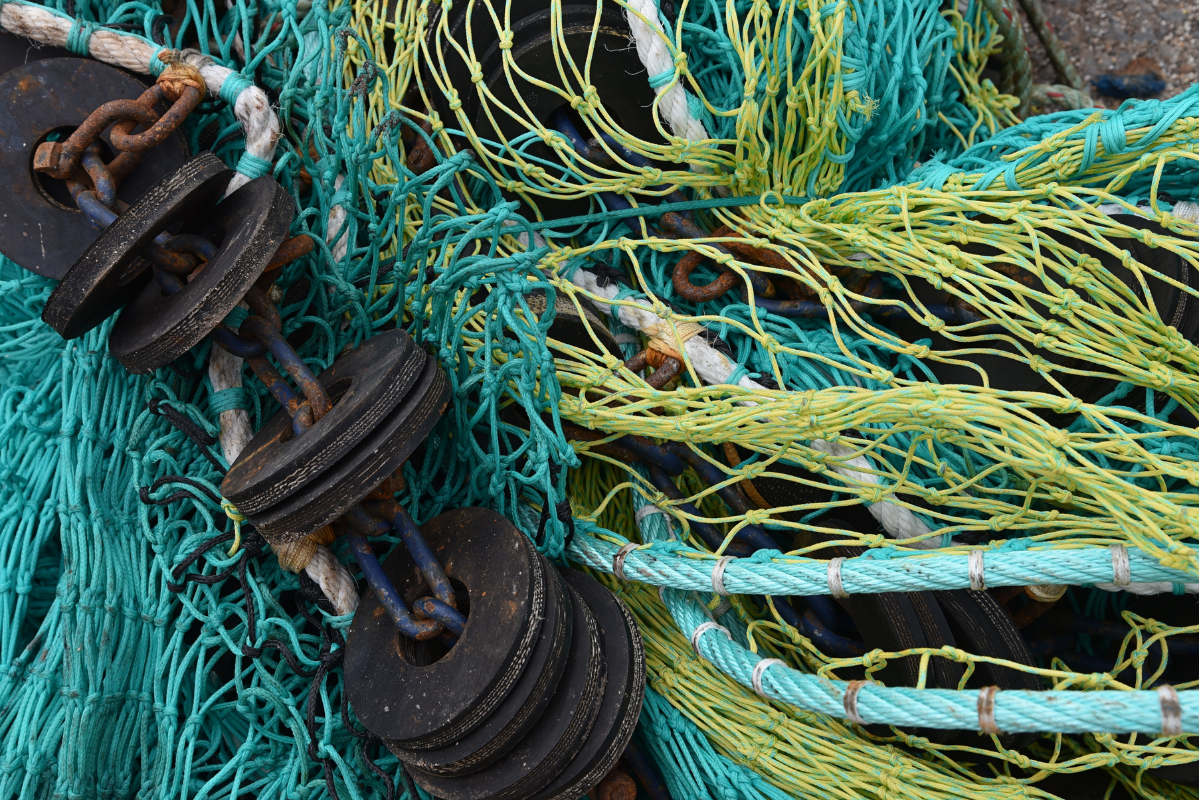
The Hawai’i Pacific University’s Center for Marine Debris Research created a Megaplastic Pollution Research Program to accelerate plastic marine debris removal and recycling in the Hawaiian Islands. | Richard Chapman – UK/Shutterstock
Marine pollution abatement, a boost to the local economy and a way to help solve the local housing crisis: A proposed project to turn marine plastic into durable infrastructure could provide all three on the island of Oahu, Hawai’i.
The Hawai’i Pacific University Center for Marine Debris Research has created a Megaplastic Pollution Research Program to accelerate plastic marine debris removal and recycling in the Hawaiian Islands.
Megaplastics are large-scale plastic items, such as derelict fishing nets, that are over a meter in size.
Jennifer Lynch, co-director of the Center for Marine Debris Research and biologist with the National Institute of Standards and Technology, told Plastics Recycling Update that the project is in the early stages. The research center received a Sea Grant Marine Debris Challenge grant to kickstart the planning and continue statewide marine debris removal efforts.
“The entire goal of this project is to accelerate marine debris removal by finding markets and plastic recycling methods to reuse the material,” Lynch said. “We only want to recycle the material into locally used, large-volume, necessary things.”
Specifically, Lynch said the goal is using the recovered material in local infrastructure projects, such as plastic lumber planking, or for use as asphalt or concrete additives. She wants the material to be mechanically recycled locally and then stay in Hawai’i, to avoid creating emissions by shipping it elsewhere.
“We are looking into infrastructure products only, especially because we have a housing crisis,” she said.
“We really want to be able to convert it out here in Hawai’i,” Lynch added. “There are no plastic conversion facilities in Hawai’i today. All of our plastic waste that we recycle gets baled and shipped away.”
The envisioned Plastic Recycling Research Facility would be able to process up to 200 tons of marine debris per year, Lynch said. Right now, different nonprofit and commercial fishing partners are already removing that much plastic material from the ocean each year and testing it for polymer identity and sources.
“That’s our baseline – that’s what we’re doing right now,” she said. “But there’s plenty more to remove. We need to find ways to accelerate that, and if we give value to the material we believe that might help accelerate the removal.”
The project is also seeking private support when it comes to buying or leasing warehouse space, Lynch said, because the NOAA Sea Grant award cannot be used to pay for rent. Warehouse space is at a premium on Oahu, she added, and “we don’t have capital investment at the moment.”
Processing some of that material locally and then keeping the products local would be “a win for the environment, a win for the economy and a win for general society,” Lynch said.
The center will also soon hire an environmental scientist to direct the program and a funded research project, “Nets to Roads: Innovative research to scale-up removal and repurposing of derelict fishing gear.”
The project will research marine plastic pollution, particularly derelict fishing gear, and the best practices to accelerate megaplastic marine debris removal and recycling.
Lynch said there are nearly a dozen partners on the project so far, and the “partner list keeps growing by the day.”
Current collaborators in the Sea Grant Marine Debris Challenge include the University of Hawai’i Sea Grant College Program, the University of Hawai’i, Papahānaumokuākea Marine Debris Project, Hawai’i Wildlife Fund, Surfrider Foundation Kaua’i, Sharkastics, Hawai’i Longline Association, Hawai’i Department of Land and Natural Resources and Altisora. Additional collaborators may include The Last Pound, e-Opala, Pacific Whale Foundation and others.
“There’s plenty of feedstock that is leaving here every day,” Lynch said. “If we could make use of that locally, that’s my hope.”
The Plastic Recycling Research Facility project comes at the same time a separate project is developing PET bottle recycling infrastructure in Hawai’i, with the goal of processing material in-state instead of shipping it to the mainland. Bottled water producer Waiākea Inc. is installing bottle-to-bottle processing equipment at its Hilo, Hawai’i facility with a planned capacity of 52 million pounds per year.